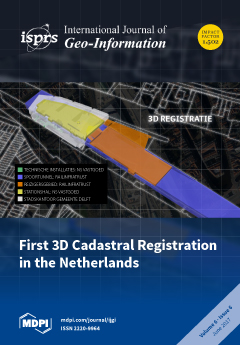Abstract:
Spatial discontinuity often causes poor accuracy when a single model is used for the surface modeling of soil properties in complex geomorphic areas. Here we present a method for adaptive surface modeling of combined secondary variables to improve prediction accuracy during the interpolation of soil properties (ASM-SP). Using various secondary variables and multiple base interpolation models, ASM-SP was used to interpolate soil K
+ in a typical complex geomorphic area (Qinghai Lake Basin, China). Five methods, including inverse distance weighting (IDW), ordinary kriging (OK), and OK combined with different secondary variables (e.g., OK-Landuse, OK-Geology, and OK-Soil), were used to validate the proposed method. The mean error (ME), mean absolute error (MAE), root mean square error (RMSE), mean relative error (MRE), and accuracy (AC) were used as evaluation indicators. Results showed that: (1) The OK interpolation result is spatially smooth and has a weak bull's-eye effect, and the IDW has a stronger ‘bull’s-eye’ effect, relatively. They both have obvious deficiencies in depicting spatial variability of soil K
+. (2) The methods incorporating combinations of different secondary variables (e.g., ASM-SP, OK-Landuse, OK-Geology, and OK-Soil) were associated with lower estimation bias. Compared with IDW, OK, OK-Landuse, OK-Geology, and OK-Soil, the accuracy of ASM-SP increased by 13.63%, 10.85%, 9.98%, 8.32%, and 7.66%, respectively. Furthermore, ASM-SP was more stable, with lower MEs, MAEs, RMSEs, and MREs. (3) ASM-SP presents more details than others in the abrupt boundary, which can render the result consistent with the true secondary variables. In conclusion, ASM-SP can not only consider the nonlinear relationship between secondary variables and soil properties, but can also adaptively combine the advantages of multiple models, which contributes to making the spatial interpolation of soil K
+ more reasonable.
Full article





